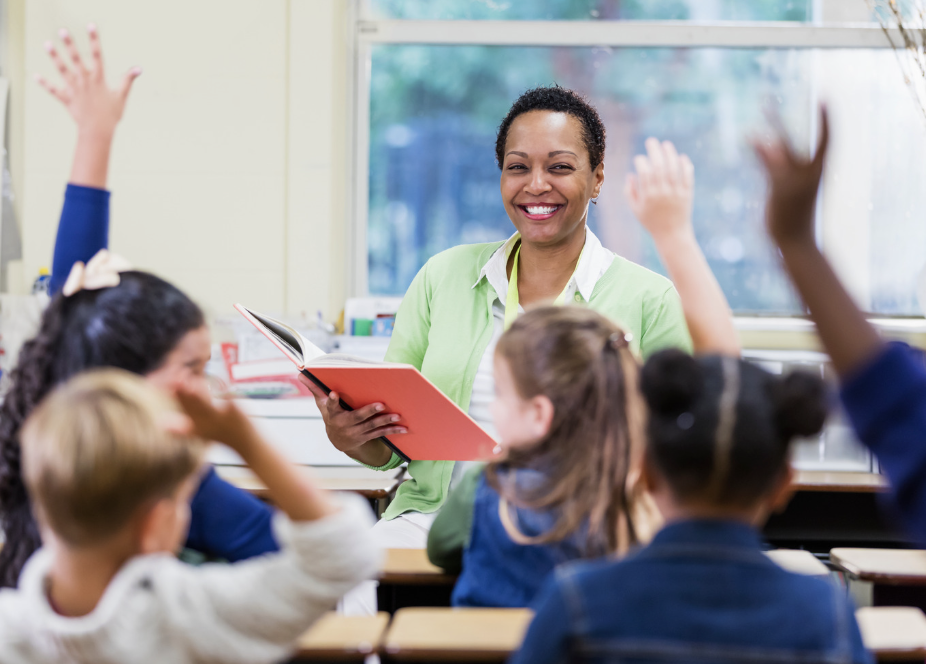Every time our students pick up a book they pick up new vocabulary, build new connections, are introduced to new words, are presented with new ideas, and so much more. We all know the benefits of reading and the correlation between the amount of time that students spend reading and their reading levels. Simply put: the more kids read, the better readers they will be.

With standards to teach, tests to prep for, assessments to give, portfolios to create, data to track…and on and on (I know you know), silent reading is something that always seems to be forgotten. When we consider all that needs to be done in a day, finding time to JUST read feels impossible.
Let’s think about the difference between silent reading and independent reading.
Silent reading
Silent reading is many times called SSR (Sustained Silent Reading) or DEAR (Drop Everything And Read). And it is just what it sounds like, quiet reading without anything else involved. Drop everything…the reading responses, reading logs, sticky notes and all.
During silent reading, a student can choose any book that they’d like to read. There are many benefits to students’ choice, one of them mainly being that students rarely have the choice of what they are reading and many times students don’t have much of a choice of text or books. Limiting students to teacher-selected, leveled, grade-level text is not allowing them to self-monitor their own reading.
Limiting students’ reading choices takes some of the fun out of reading. We have to trust them as readers and allow them to pick what they want to read, explore new genres, read new things, and learn to choose books that they love. Silent reading allows them to grow into real-life readers.
During silent reading, there are no reading goals. Now if you’ve been here a while, you know I love setting goals, so you know I mean it when I say, “no goals.” Silent reading should be done without any particular goal in mind…maybe just the end of the book, that is a goal that I can stand behind. But students are not held accountable for how many pages read, how long they’ve read, or what type or level of text they’ve read.
And there is no instruction required. Students can pick up their books and just read. And the teacher can model by reading as well. In giving them this time you are developing habits in them that direct instruction just cannot bring.
Independent reading
During independent reading students choose a book with the teacher’s guidance. Independent reading is a planned block of time during reading workshop or reading stations/rotations. Students may be working on a text chosen by the teacher for book clubs or other comprehension activities.
During independent reading time, the students are reading at their independent reading level, which is determined by the teacher. The teacher can conference with students 1:1, meet with small groups, or circulate as students are reading.
And you knew this was coming…students have clear goals in mind as they are reading. During conferencing with the teacher, they work to set goals together and focus on them during independent reading time.
Instruction occurs in a mini-lesson before independent reading time and then as the group comes back together to share at the end of the workshop time.
By giving students independent reading time, you are creating active readers that have the skills that they need to grow and develop as readers. It is a very important part of reading instruction and should not be replaced by silent reading.
So how can you fit it all in?
I know fitting in time to have silent reading on top of your scheduled reading block seems like an impossibility. But when students have time to read with books of their choice, they learn to love reading.
The best compliments come from parents that say their child now loves to read because they found a book they love and they have TIME to read it.
One of the best times of day to set aside for silent reading is right after lunch. That may seem like a not-so-ideal time, but you can allow the kids to find a spot, get comfy, grab a book, and read. While they read, they can take turns going to the bathroom too.
This really calms them down after lunch so that they are ready for the rest of the afternoon. They come back from lunch a little wild, just a little, and having a quiet 10-20 minutes of reading calms them down and they all have a chance to use the bathroom too… a win-win!
You can also have “pop-up” reading time and when you think you can fit it in, just do it!
No matter how you get books into your students’ hands, you are helping them to grow and learn. Making time for silent and independent reading is not an easy task on top of all the other things that you plan throughout your day. When you slowly work in time and give students choice in their reading, you will begin to see them thrive as readers.
You might also like to read these posts about reading:
How to Group Students for a Successful Reading Workshop
How to Make a Reading Workshop Schedule with Limited Time
Reading Workshop: What is the Rest of the Class Doing?
The Importance of Interactive Read Aloud








